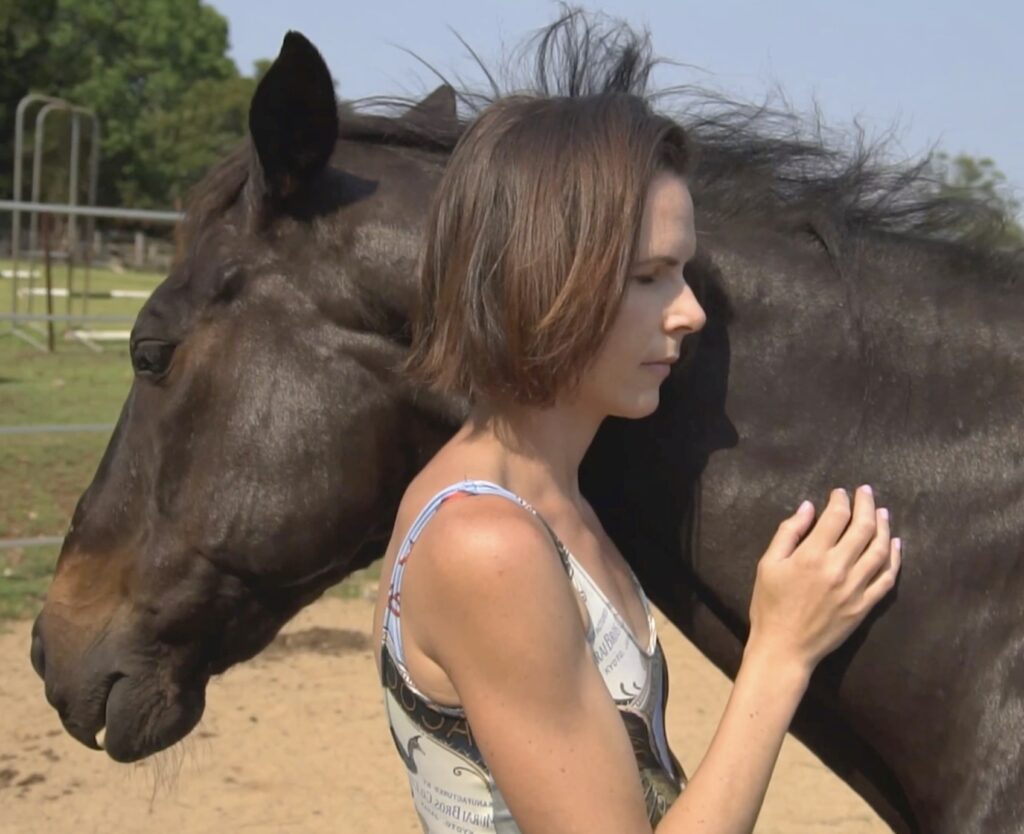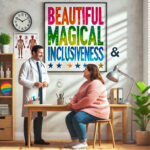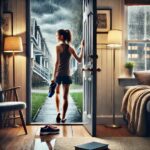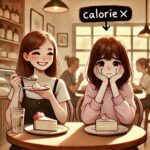In the waiting room, there was a horse

In the waiting room, there was a horse
At the age of 14, in my first attempt to reclaim my life from the grips of undiagnosed Anorexia Nervosa (AN), I was incredibly driven and intrinsically motivated. Today, at age 37, I am proud of that young woman who knew nothing of the thing that within months would violently tear through her life – her mind, body, relationships, dreams, passions, purpose and spirit. She was naïve, but survived.
Reciprocity in eating disorder recovery
From those earliest days of AN war, I’ve been inclined toward being an active participant in engaging help. I firmly believe that I was brought into this world to distinctively contribute. I have a deeply lodged passion for creative expression and helping others. As many people with AN (especially high functioning) might attest, it is in the situation of being the “treatment” recipient that we often also are offering the “treater” a wealth of insight, education and new treatment blueprint. Sometimes this reciprocity is recognised and too often it is not.
Stigma gets in the way. As does the murky tangle of the true self of a person and AN, particularly when one is unwell. Certainly, there is a tenet in AN whereby it doesn’t want me to “take”. To take up space, take someone’s time, or take care of myself. But my inclination toward collaboration in recovery and actively engaging support is different. This is the pull of my true and healthy self that desires to experience the fullness of life, regain a sense of purpose, and explore new and exciting possibilities. It’s the energy that sits behind my relentless drive to escape years of deep waring and deadly longing for external validation.
‘An enigma’, my mother said
There is plenty of creativity and wild in me. “An enigma” is how my mother described me as a child. I’ve grown to like this. Not surprisingly then, when engaging in therapy, I’ve been open and inclined to different styles and postures, especially in more recent years. I’ve experienced a deep inner sense that much of what I’ve persisted with, I have not connected with. With my best interests at heart, therapies have been recommended based upon the predominant findings documented in medical literature around AN treatment. But I’m determined. And so is AN. I’m careful as I type these words. Careful in a sense to declare what I want for my life and not what AN wants. Sure, AN has been persistent, all 25 years of it, but it also has responded to some of the lesser-known and unfortunately less accessible modalities of treatment including Narrative Therapy (NT) and Equine-Assisted Narrative Therapy (E-ANT).
A posture of curiosity and collaboration
I moved to Queensland’s Sunshine Coast from Melbourne, Victoria, in 2016. My AN treatment took a significant shift that same year when I began NT. Here began a collision with the realisation within me on what it would take to recover. This is not to say that I am now on a solo recovery mission. But I have within me, in collaboration with the desirable support, the capacity to re-author my identity or, as I like to express it, reclaim me. Recover Fiona.
By adopting the striking posture of curiosity and collaboration inherent in NT, I have been supported to stand in my true values. Supported to stand with much greater expansion, presence and hope, and to gain life-saving agency as I move through my recovery journey. The work of loosening and losing those things that cling that are incongruent with my true self is still … progress. And progress is a most beautiful thing.
Narrative therapy can help to shift the shame
When I was first unwell with AN I recall seeing an adolescent therapist. She had a calm presence, was non-confrontational and she didn’t inquire directly about food, exercise or any of the AN behaviours or concerns. I felt safe in this space at a time when fear was the dominant tenant of my life. It’s a shame we didn’t pursue this avenue further, but AN had not just starved me. It had severely silenced me too. I doubt I communicated much feedback to my parents or that AN would have allowed that. While it’s an enormously long time ago (time can go very slowly in parts of the journey), I would suggest this practitioner was using a depathologizing approach – leaving behind the symptoms that had brought me to therapy and meeting me as a whole person. This is true of the NT approach I have come to work with and found to be highly effective in supporting my AN recovery. Such an approach can allow us to move away from shame and the thought that there is something wrong with us or that we are AN. Because while AN does engulf me, my true spirit has always maintained at least a flicker burning deep within that yearns to shine brighter every day.
Equine encounters
I’m trying to think back now to my first encounter with the horses. The narrative therapist with whom I collaborate, has worked to develop and build (E-ANT) in Australia. For the past four years, my therapy journey has seen us alternate between “office” and “horse” sessions. My mum had an image of horses reclining on couches when I first mentioned (poor shorthand) “horse therapy”. I recall changing my clothes many times to get into the “horse feel”, quite different from the “couch feel” and having no idea what I was turning up to. That must have been big for AN. Mum was worried about me being kicked by a horse. I wasn’t. I’ve had some life-threatening moments over the years, but I knew for sure that my time with the horses wouldn’t be one of them. What I didn’t realise, however, was how threatened AN would be.
How my ‘collapse’ led to a new beginning
I’m worried about succeeding. Always. On this occasion, as I entered the farm property, the worry was overwhelming. At this time I’d come to avoid all things where I didn’t know for certain if I could succeed. Somewhat at the “pinnacle” or climbing my career ladder in my early 30s, I was mid-way through my PhD at a prestigious university, travelling the world to research, running a steady Alexander Technique practice, working as an academic, and regularly engaging in choreographic commissions and professional performances with world-renown artists… big breath…, my body just couldn’t keep going. AN. (+Crohns + Fibromyalgia + Sensory Processing Disorder). I suppose when such a lot came tumbling down and I was left fighting for my life, it was going to come down with a CRASH.
I tend to refer to this time as “the collapse”. But “the collapse” led me to move to a place where I would meet a new therapist and have this opportunity with the horses. I describe that time following “the collapse” as “the beginning of the end”. That being, the start of a once and for all fight to see AN end. A commitment to this and through my artistic works, many a public declaration.
‘Couch’ talk is different at the farmhouse
I’m looking through my session notes to jog my memory. The notes have been scrawled on the veranda of the farmhouse where we talk about working with the horses in the round pen. This is the part I initially, and still to some extent, dislike. For a long time, I wasn’t sure why this was so. I now understand that AN hates for me to have had a positive, even thrilling experience and much less to speak about it, have positive witness input, and capture this all on paper. At the farmhouse table, looking out at the rolling hills, “shrinking into the corner of the couch”, as I have done for many years in “talk” therapy, becomes much harder to do. Often, after galloping laps of the round pen with one of the horses, there is an aliveness and buzzing in the whole body that wouldn’t fit into the corner of a couch anyway.
This work is movement and presence with “sprinkles” of oral language. It feels primal and, in some ways, suggests going back to those very first movements in the womb. We move well before we ever speak. I say “oral” language as I believe the body also speaks in movement, in beautiful utterances that express thousands of words for which we don’t have a vocabulary. This is why I dance and am a dancer. This too is why I initially struggled with talking after working in the round pen. However, there is an important function in finding words, clumsy albeit, and connecting experiences in the round pen with those of living daily with AN.
Back home, the talking aspect of narrative therapy brings benefits
Opening the door back home after a session can be a jerk into a different reality. Such a contrast of environment in every way. And this is where I’ve come to understand why the talking aspect of the therapy is important. When I’ve articulated significant moments, themes, challenges and understandings and had the chance to discuss these with others, I am left with a few “take-aways”. Back home I can start to add these or notice these in the dance of recovery. At first, they can feel like flourishes. Decorative and a bit fake. But mostly, after time to seep in, and willingness to attempt application, they feel more like a gift. As I write this I think of the messes and chaos of bringing up my 18-months-old boy, the daily journey of marriage, or the curveballs that the COVID-19 pandemic continues to throw us all. Just how much harder these would be without the opportunity for AN to be recognised, challenged and repositioned in the EANT work.
Using E-ANT to treat AN and other eating disorders is a unique area. There is also a significant difference in this approach compared to more standard Equine Assisted Therapy (EAT) approaches. Some writings of more standard EAT used in this setting cause heat to rise in my whole body. I recently read in one description “xxxx horse, is known to blatantly point out issues that clients need to address”. In my experience, this is an undeveloped view of the role of the horse and its relationship to the human. In my experience, the horse who is a herd animal as a means of protection is intuitive and sensitive to any anxiety; if a herd member is experiencing anxiety, it means there may be a predator present. I believe the horse senses the whole person and picks up on traits of AN such as anxiety, tension, tentativeness, shrinking and indecision. It perceives the presence of AN as that of a predator.
Understanding the effects of anxiety
Symbiotic, similar but more biologically based than synchronicity, is the term or sense that stands out to me in ration to this work, especially now having my own child. A symbiotic relationship is described as one in which organisms, people, or things exist together in a way that benefits them all. When I rock my baby to sleep, my heart rate is lowered such that mostly I also fall asleep or become sleepy. Together we help each other to sleep. It’s quite irresistible. The pull of matching or symbiosis. The days when AN wars within me, my baby notices. I rock and sing holding him as usual, but if I am waring with AN my heart rate is up and his whole system notices.
Early on in the E-ANT work, once I realised that the horse will be more at ease and open to connection if my heart rate is steady, I wanted to try to keep my anxiety down, lower it if it was up, or seek support in realising this from my therapist and equine educator. I wanted to succeed. Success is highly important to me and to AN. This is a beautifully positive and reciprocally beneficial thing to want to succeed in. In my journey, I’ve come to understand that the desire to succeed needs to be appropriately directed and the desire for perfection shifted to one of excellence. The words of an old dance teacher come back to me also: “Use the adrenalin on your terms.” Over time and having grown my capacity to regulate and direct the adrenalin, I have been able to move into a deeper engagement where I can experience genuine curiosity and follow a path of discovery with each horse. To me, this is recovery.
Dancing rich stories
From Henry to Chai to Marnie and now Aztec, the array of horses with whom I’ve worked has both matched and contributed to the emergence of richly layered story, changing needs and contributed to skill range and confidence. I began with a laid-back and playful creature when I was most tight and uncertain. I worked with female horses at a time when I regained my womanhood and entered an intimate relationship. I now am with the oldest horse as I approach 40 and settle into motherhood, family life and reflect on the road thus far. In my most recent session, the confidence developed over the past four years was evident.
With no assistance I got onto Aztec who was without a saddle, turned to face backwards and maintain a calm conversation as he surprisingly began to walk off to the other side of the round pen. I had nothing to hold on to, and no way of getting off safely. Certainly, running through my mind is a vague question from AN, “Why aren’t they coming to your rescue? Why don’t they care?” But I knew that I chose to put myself in this position and that the best thing I could do was to remain calm and to move in collaboration with the Aztec. I also deeply trusted myself, my story, and that of Aztec. I don’t need to be rescued. Anymore. AN’s insistence and concern can be redirected as a signal to deploy my inner resources and ask for the outer ones as needed.
Reclaiming what AN stole, and embracing new opportunities
I’ve never been one to play by the “rules”. I never thought I’d play a part in healing horses. Movement of all kinds inspires me to move. Movement also heals. Soon I was dancing with the horses in the round pen and paddocks. (This, by the way, is not breaking any “rules” in E-ANT but perhaps it isn’t what most individuals undertake in their sessions. AN also told me it wasn’t “normal”.) I made an audition reel to work with a Swedish dance company. The company was impressed with my video and I worked with them on a group performance where we danced through city streets, embodying horse movements and mannerisms. I learned from this experience that (a) through E-ANT I have acquired a deep and embodied understanding of horse movements and mannerisms, (b) I much prefer to move as a human in relation to horses.
As I dance with the horses I am engaging with knowledge and skills both old and new to develop ways of being, responding, adapting, communicating, loving, playing and exploring. AN violently disregards and throws into the rubbish pile the incredible wealth of understanding I have about human movement and psychophysical education including horses. Before “the collapse” I was educating horse riders using Alexander Technique on a weekly basis. This knowledge in practice now sees me sit with ease and poise atop the horses at the farm. I immediately observe and address the way the anxiety causes my centre of gravity to rise and redirect my pelvis to sit with weight and expansion upon the creature. I am delighted to consider that E-ANT supports one to reclaim that which has been stolen by AN as well as open the whole collaboration (client, horse, therapist, horseperson) to new and wild possibilities, such as dancing!
I feel needed these days
Each time I turn up to this work there is a beautiful horse patiently waiting for me. I feel needed these days. Feeling needed is a basic human need. To feel connection and to feel purpose. To take up space, to be bold and also to be soft. AN silences. This work is bare of much oral language as we know it and yet one is developing the capacity to communicate. Clearly. Directly. Quickening responses and learning to respond rather than react. There is such an intense submersion to the experience of E-ANT (no doubt the brain pathways rewiring extensively) that AN is quite silenced or at very least left out of the round pen. There is no space for it and with that comes a radical refreshment and reset, some much needed time out from the relentless onslaught of deceptive and destructive AN thought.
Aztec remembers my scent and I can enter the work with very little in the way of a join up these days. Aztec is old and I’m told that he sadly won’t live much longer. The irony is he can’t eat as his teeth have so deteriorated. I feel warm inside, when I think that I have contributed to a better life for this creature. Furthermore with something so free, wild and unexpected as dance. I do hope he dances in heaven. I know he has been here to help me heal in ways that humans simply couldn’t.
The horses on the farm where I engage in E-ANT are mostly rescued horses that are being supported to heal and recover in this work with humans.





